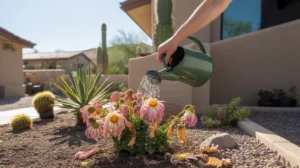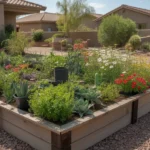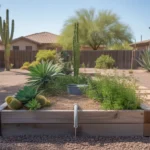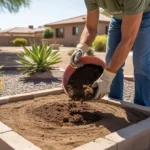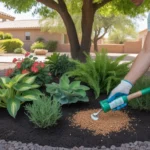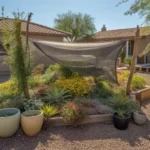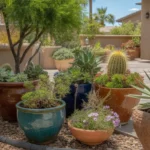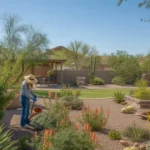Even the most well-tended Gilbert garden can fall victim to wilting flowers, especially during the intense Arizona summer heat. Drooping, lackluster blooms are disheartening, but don’t give up hope just yet. With a few simple techniques, you can revive those wilting flowers and restore your garden to its former glory. Here’s how to perk up your Gilbert garden when the going gets tough.
Check the Soil Moisture
The first step in reviving wilting flowers is to check the soil moisture. Stick your finger about an inch into the soil near the base of the plant. If it feels dry and crumbly, your flowers are likely thirsty and in need of a deep watering. Aim to saturate the soil to a depth of 6 inches, allowing water to reach the plant’s entire root system.
However, be careful not to overwater. Gilbert’s clay soil can easily become waterlogged, which suffocates roots and leads to further wilting. If the soil feels soggy or you see standing water, hold off on watering and allow the soil to drain. Proper drainage is key to maintaining healthy plants in our area.
For container plants, check that your pots have adequate drainage holes. Sitting water can quickly cause root rot, especially during Gilbert’s monsoon season. If needed, carefully repot your flowers into a container with better drainage to prevent future wilting issues.
Provide Temporary Shade
Gilbert’s intense sunlight can be too much for some delicate flowers, causing them to wilt and fade. If you notice blooms drooping during the hottest part of the day, provide some temporary shade to help them recover. Old sheets, lightweight fabric, or shade cloth can be draped over plants to block out harsh rays.
For a longer-term solution, consider planting heat-sensitive flowers in areas that receive morning sun but are shaded during the afternoon peak. East-facing beds or those shaded by taller plants or structures are ideal. You can also use shade sails or pergolas to create dappled light in problem areas.
Remember, even sun-loving desert plants can suffer in Gilbert’s extreme summer temperatures. Keep an eye out for signs of heat stress like wilting, scorched leaves, or dropped buds. Providing occasional relief can help your whole garden sail through the summer unscathed.
Deadhead and Prune
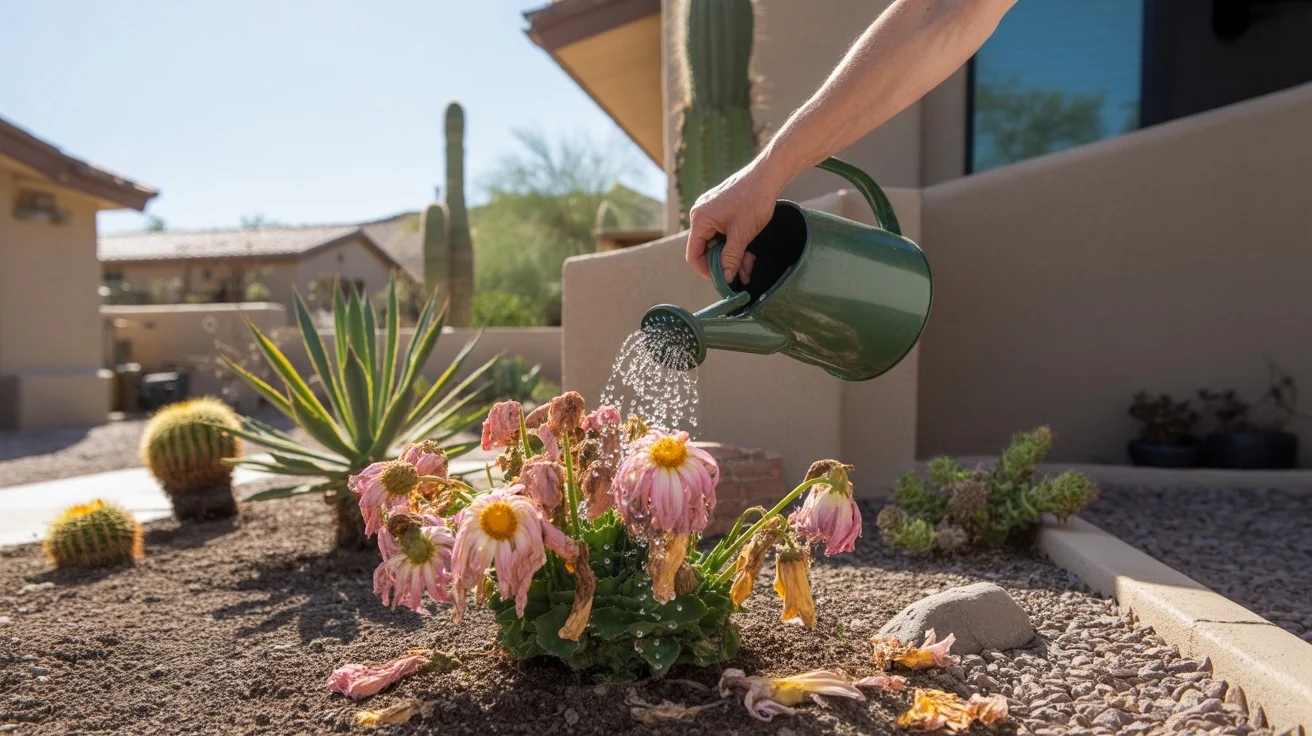
Sometimes the secret to reviving a lackluster plant is a good pruning. Deadheading, or removing spent blooms, encourages the plant to put its energy into producing new flowers instead of setting seed. Snip off wilted blooms just above the nearest set of healthy leaves.
If your plant has a lot of dead or dying foliage, don’t be afraid to prune it back hard. Removing damaged leaves helps prevent disease and allows the plant to focus on new growth. Use clean, sharp shears to avoid crushing delicate stems.
Some Gilbert favorites like gaillardia, coneflowers, and salvias respond especially well to a mid-season haircut. Cut them back by about a third once blooming slows in summer’s peak. With a little TLC, they’ll soon reward you with a fresh flush of vibrant flowers.
Fertilize Carefully
If your flowers are wilting despite adequate water and care, they may be suffering from a nutrient deficiency. Arizona’s alkaline soil can make it difficult for plants to absorb vital nutrients like iron. A targeted fertilizer may be just the boost your blooms need to bounce back.
However, use caution when fertilizing wilting plants. Applying too much fertilizer can actually burn stressed roots and worsen the problem. Choose a gentle, organic fertilizer and apply at half-strength until plants show signs of improvement. Kelp or seaweed-based products are a good option for reviving struggling flowers.
For the best results, have your soil tested to determine exactly which nutrients your Gilbert garden is lacking. The University of Arizona Cooperative Extension offers soil testing services that can help take the guesswork out of fertilizing. Armed with your test results, you can give your flowers precisely what they crave.
Monitor for Pests
Wilting flowers can sometimes be a sign of pest problems. Sucking insects like aphids, whiteflies, and spider mites drain plants of vital fluids, causing blooms to droop and fade. Regularly inspect your flowers for signs of infestation, including sticky honeydew, webbing, or distorted growth.
If you do spot unwanted visitors, act quickly to prevent a population explosion. A strong blast of water from the hose can dislodge many soft-bodied pests. For more stubborn infestations, try an insecticidal soap or neem oil spray, taking care to coat the undersides of leaves where pests like to hide.
Keeping your Gilbert garden well-maintained can help prevent pest issues from taking hold. Remove weeds and plant debris that can harbor insects. Attract beneficial predators like ladybugs and lacewings by planting small-flowered plants like alyssum and dill. With a little prevention and vigilance, you can keep your flowers pest-free and picture-perfect.
Consider the Season
When diagnosing wilting flowers, it’s important to consider the time of year. Many Gilbert favorites like penstemon and desert marigold naturally go dormant during the hottest summer months. What looks like a dying plant may simply be taking a seasonal siesta.
Before taking drastic measures, research your specific plant’s life cycle and dormancy habits. Some flowers, like spring-blooming bulbs, die back completely after flowering and won’t put out new growth until the following year. Others simply need their foliage left in place to gather energy for next season’s show.
If your wilting plant is a heat-loving annual like cosmos or zinnia, it may simply be reaching the end of its natural lifespan. Pull spent plants and replace with fresh seedlings for late summer and fall color. In Gilbert, our long growing season means there’s always an opportunity to try something new.
Know When to Let Go
Despite our best efforts, not every wilting flower can be saved. If a plant shows no signs of improvement after troubleshooting, it may be time to let it go. Diseased or severely stressed plants can actually threaten the health of your entire garden.
If you do decide to remove a struggling plant, don’t despair. Consider it an opportunity to try a new variety better suited to your specific growing conditions. Look for Arizona natives or desert-adapted plants that can handle Gilbert’s intense heat and alkaline soil. Local nurseries and the Desert Botanical Garden’s plant sales are great resources for finding tough-as-nails beauties.
Remember, even the most experienced Gilbert gardeners lose plants from time to time. Embracing the occasional failure is all part of the learning process. By staying curious, adaptable, and attentive, you’ll soon develop a green thumb that can weather any wilting woe.
With these tips in mind, you’re well on your way to reviving your wilting Gilbert flowers. Whether your blooms are thirsty, sun-scorched, or simply in need of a little extra love, a bit of troubleshooting can go a long way. By learning to read your plants’ signals and respond accordingly, you’ll keep your garden looking its best all season long. So roll up your sleeves, grab your pruners, and get ready to restore those droopy flowers to their perky, vibrant selves. Your Gilbert garden will thank you.

